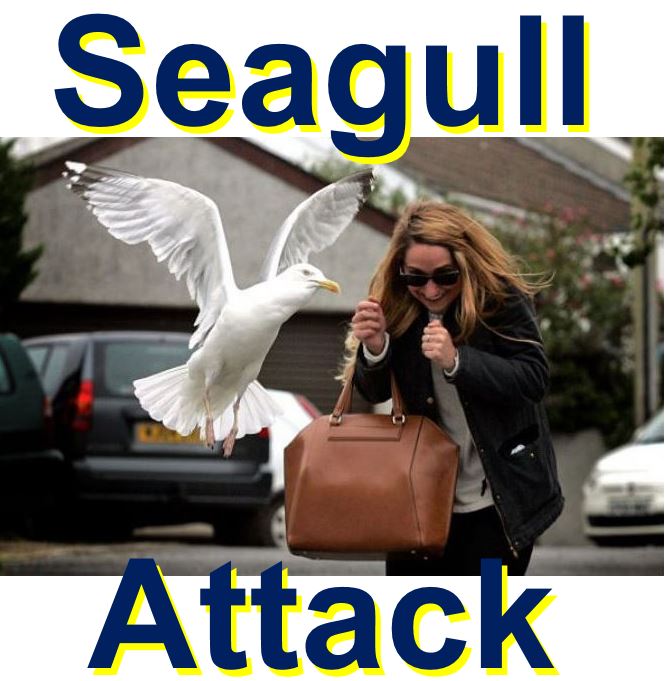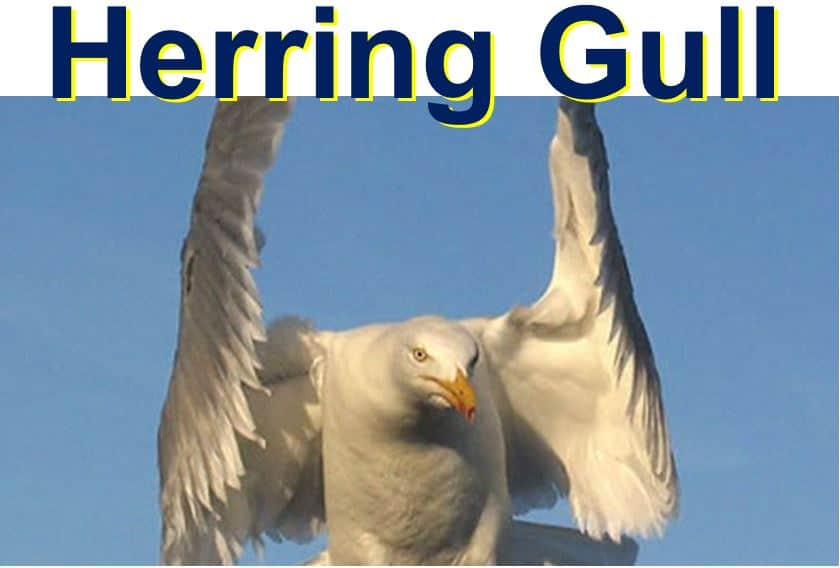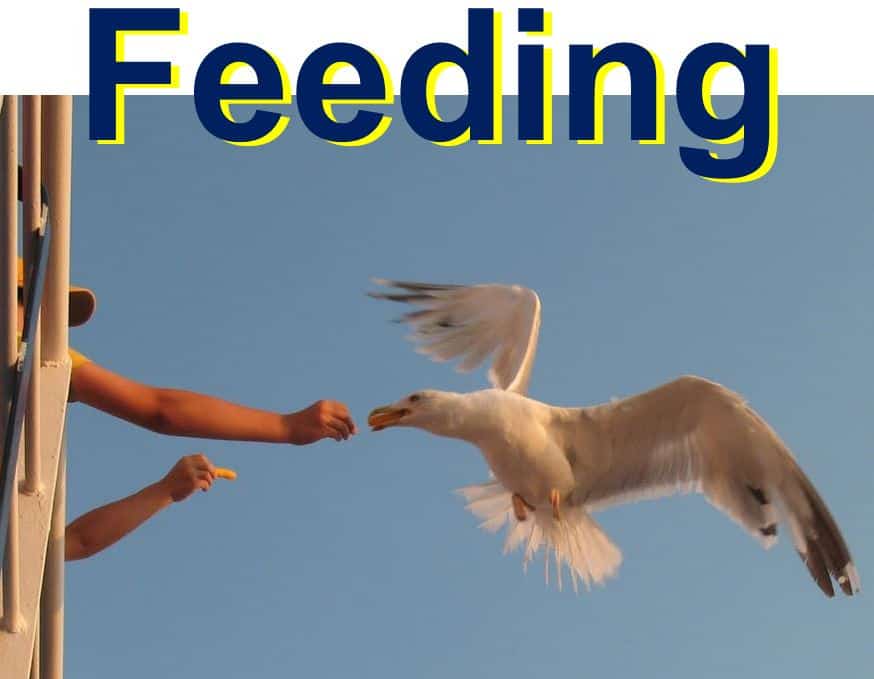A seagull study by a group of psychology undergraduates to see how urban gulls and humans interact and why the birds behave the way they do is underway at the University of the West of England (UWE Bristol). They will gather and analyze data on seagulls’ nesting sites, human behaviours, and how humans respond to them over an 18-month period.
The urban gull population in the UK is growing rapidly, something more and more people across the country are becoming concerned about, partly because they might be displacing some native bird species – in many cases they have also become a nuisance.
There have been so many complaints about seagull noise, aggressive behaviour and excrement, that local authorities across the nation are beginning to say they cannot cope.
 The number of reports on seagull attacks on adults, teenagers, young kids and pets has increased considerably over the past ten years.
The number of reports on seagull attacks on adults, teenagers, young kids and pets has increased considerably over the past ten years.
Measures so far ineffective
Project leader, Dr. Chris Pawson, head of Psychology at UWE Bristol’s Faculty of Health and Applied Sciences (HAS), says measures taken over the past ten years to control gull populations have been largely unsuccessful.
Dr. Pawson and colleagues believe we need a better understanding of the motivations of the protected species in order to formulate a more effective approach.
Working together with Bath and North East Somerset Council, the undergraduates and Dr. Pawson will plot data – including information about complaints from people – on sophisticated maps and identify patterns which may help explain why the birds behave as they do.
Gull and human behaviour can be similar
Regarding the behaviour of wildlife, Dr. Pawson said:
“From a behavioural ecology point of view, many of the principles you call upon to explain human behaviour are exactly the same for wildlife.”
“Humans make decisions based on the pressures of the environment around them. It just so happens that these gulls are finding the buildings and food available in Bath very comfortable.”
“It is warm for them and there is little competition for food. Where would you rather be – on a cliff top somewhere, or on a nice ledge with ready food source?”
 The herring gull is the typical raucous ‘seagull’ which is commonly found in coastal towns and also inland. Some people are concerned about their increasing presence in urban areas. (Image: rspb.org.uk)
The herring gull is the typical raucous ‘seagull’ which is commonly found in coastal towns and also inland. Some people are concerned about their increasing presence in urban areas. (Image: rspb.org.uk)
Peter Rock, the leading expert on gulls in the Bristol and Bath area, says it is about time a study was carried out on the birds’ behaviour. Both the Council and Dr. Pawson hope to support Mr. Rock’s work.
Why do gulls prefer some areas and not others?
Dr Pawson said:
“A census of the gull population is frequently carried out in Bristol and Bath but, at the moment, there is so little understanding of the life history of these urban gulls.”
“We need to know on what basis they are making their decisions and why they go to some areas and not others. By having these increased levels of data, ways we can shape their behaviour might emerge. We are open to all sorts of ideas.”
“Interventions in Bristol or Bath have not, to date, significantly lowered the population of gulls. Current levels are such that complaints are intolerably high for the environmental teams and for the councils.”
“Since I’ve been in Bath I have become acutely aware of the strain it is putting on local government, which is forever fielding complaints.”
 If you were a seagull, would you prefer to nest on a cliff or on a nice warm rooftop with lots of people who feed you down at ground level, and litter all over the place full of rich pickings? (Image: bythedart.co.uk)
If you were a seagull, would you prefer to nest on a cliff or on a nice warm rooftop with lots of people who feed you down at ground level, and litter all over the place full of rich pickings? (Image: bythedart.co.uk)
Bath residents will be invited to submit data digitally about seagull activity in the city under a ‘citizen science’ part of the project, which will be done in collaboration with Middlesex University.
The researchers need to massively increase the amount of information they have access to. Residents will be able to help by telling the team what they have seen and where. “It also means we can engage with the public about scientific research,” Dr. Pawson added.
Bath & North East Somerset Council’s Cabinet Member for Community Services, Councillor Martin Veal, said:
“This research runs in parallel with our three-pronged approach to tackling the issue of gulls in the city. It is a mutually-beneficial research project that comes at no cost to the Council.”
“There is very little existing research available on this subject and it will give us the opportunity to gather evidence at a scale that hasn’t been possible before, providing a clear steer on future intervention work.”
Why are gulls moving into towns?
According to the RSPB (Royal Society for the Protection of Birds), some lesser black-backed and herring gulls have used rooftops for nesting since the 1940s. Nobody is sure what prompted this move, but abundant sources of food inland, and safe, predator-free nesting sites are most likely major factors.
The 1956 Clean Air Act put a stop to tip operators burning waste, which meant a sudden huge increase in available organic material for seagulls.
The RSPB wrote on its website:
“Many urban streets are also frequently replete with discarded food and accessible rubbish, and some people feed gulls.”
Although the number of roof-nesting gulls is increasing, the overall population of herring gulls has declined considerably, the RSPB informs, making them a red list species. Over recent years, the lesser black-backed gull population has also gone down.
Regarding local authorities’ attempts at controlling urban gull numbers, the RSPB writes:
“Some local authorities attempt to control the numbers of urban gulls by egg-oiling or nest destruction. Since urban gull populations are still increasing, these actions do not appear to have the desired effect.”
“As long as there are suitable nest sites and available food, random nest destruction alone is unlikely to work, since the birds will simply re-nest either in the same place or somewhere nearby.”
Video – Seagulls snatching our food
Seagulls have learned how to help themselves to our food remarkably well. They will even snatch it out of our hands.
